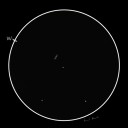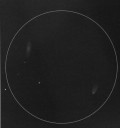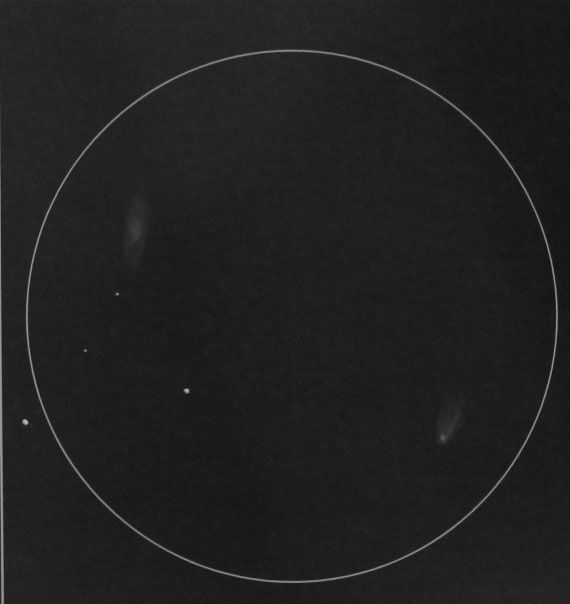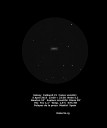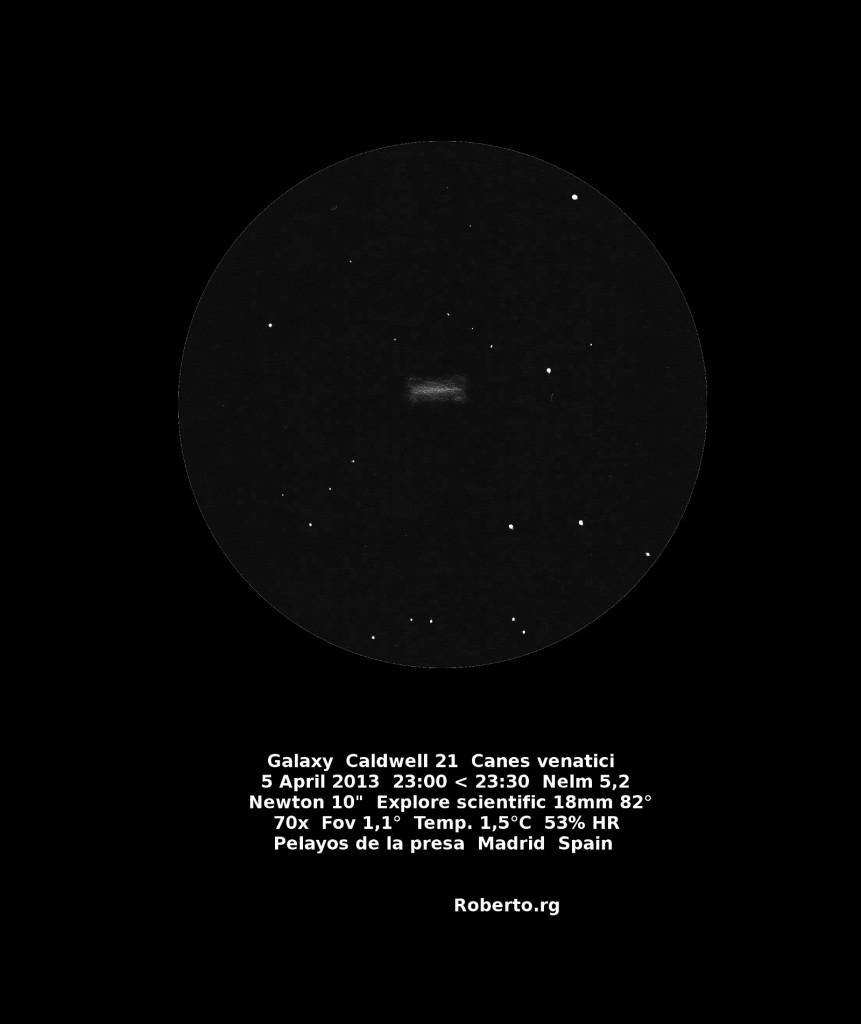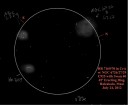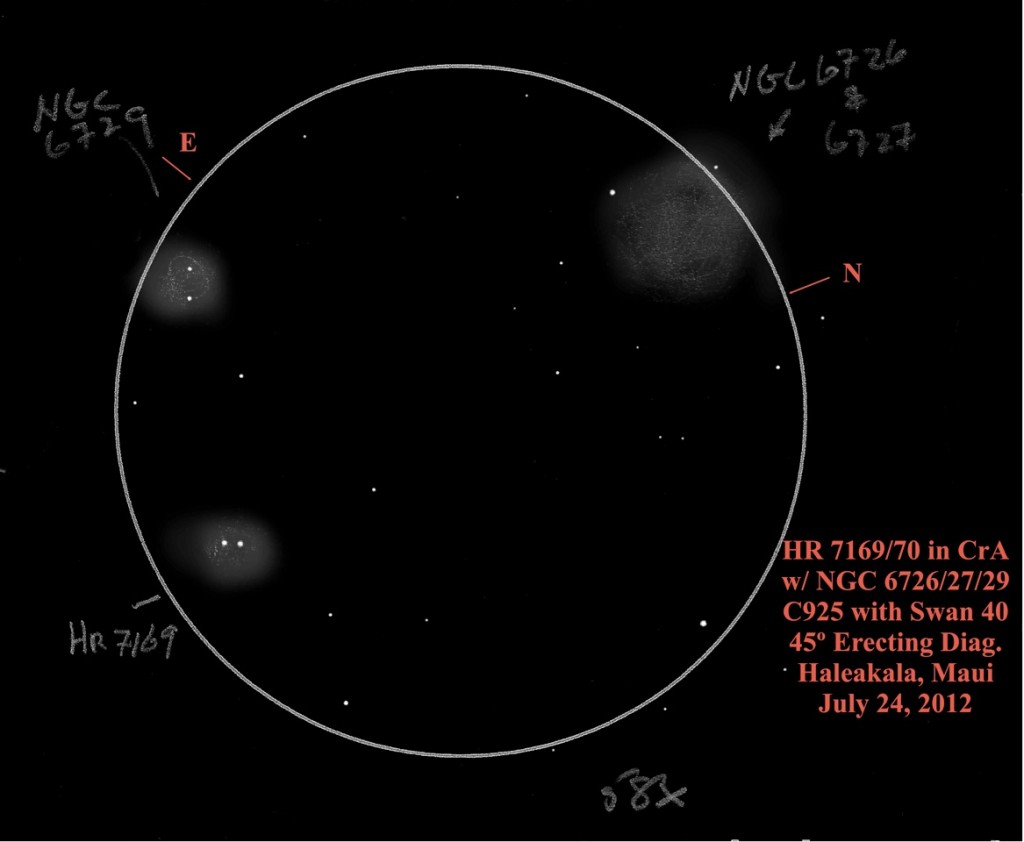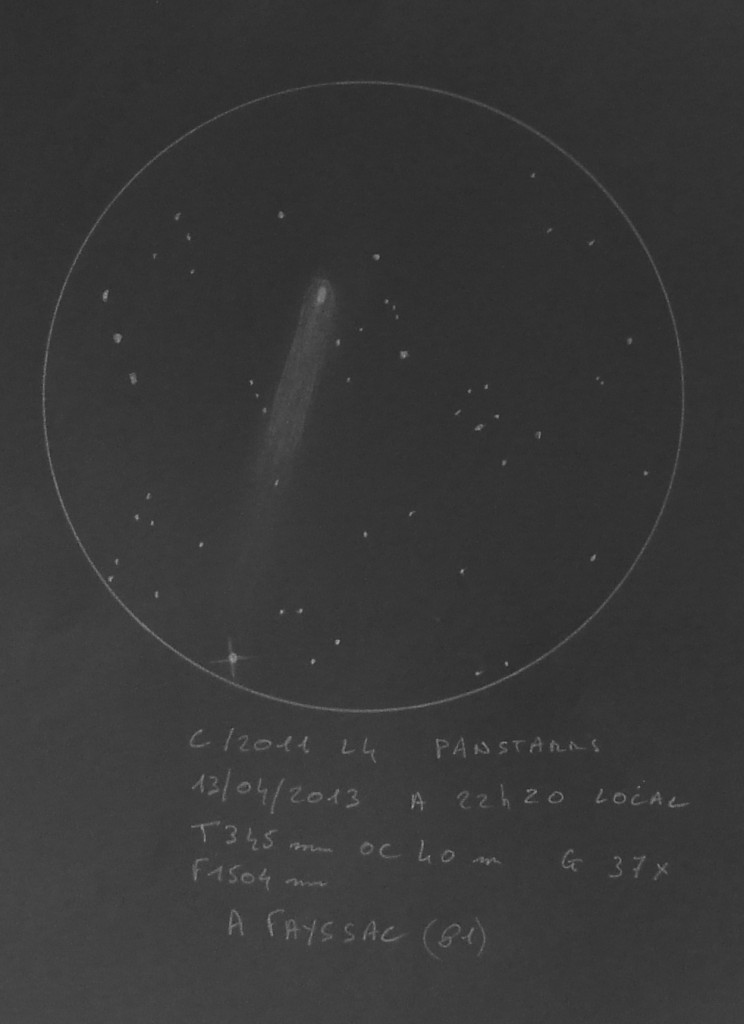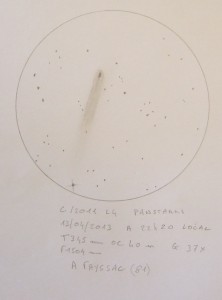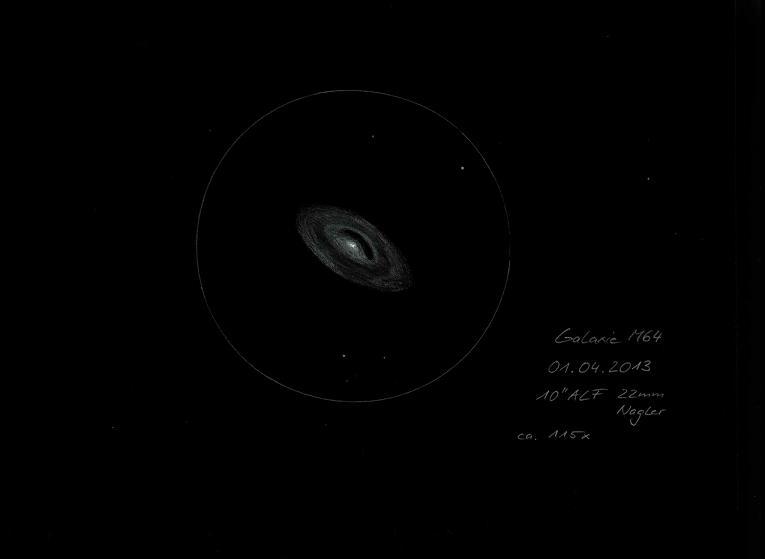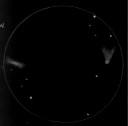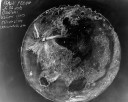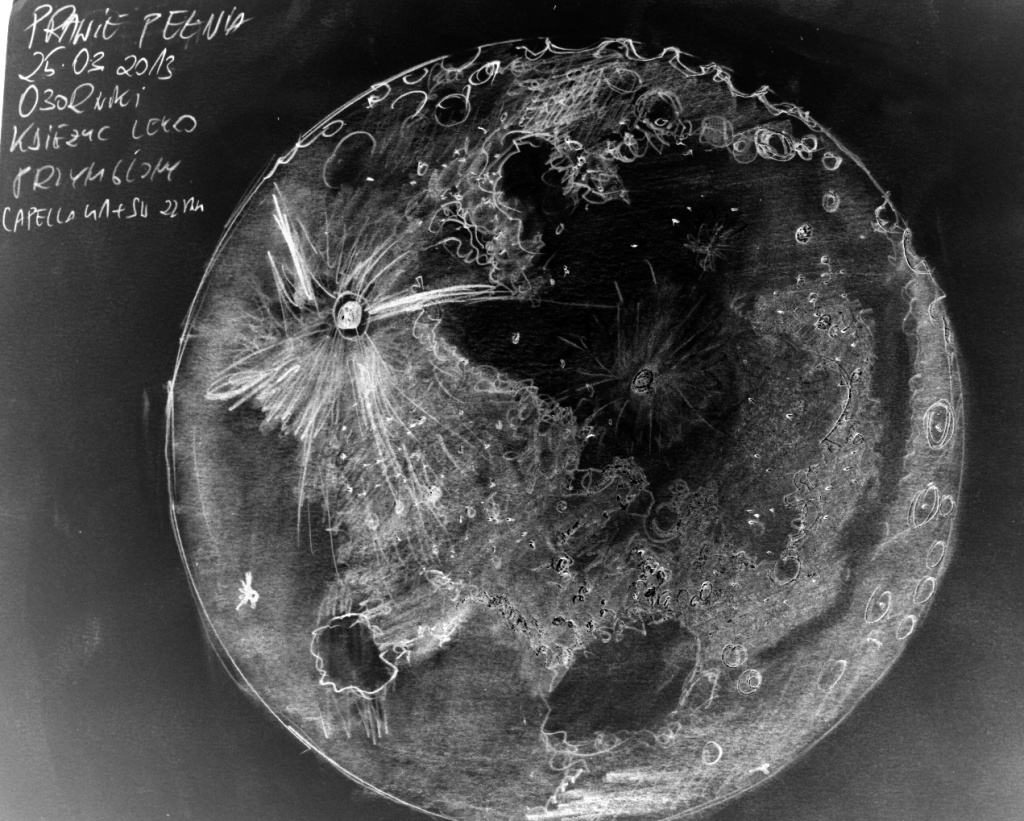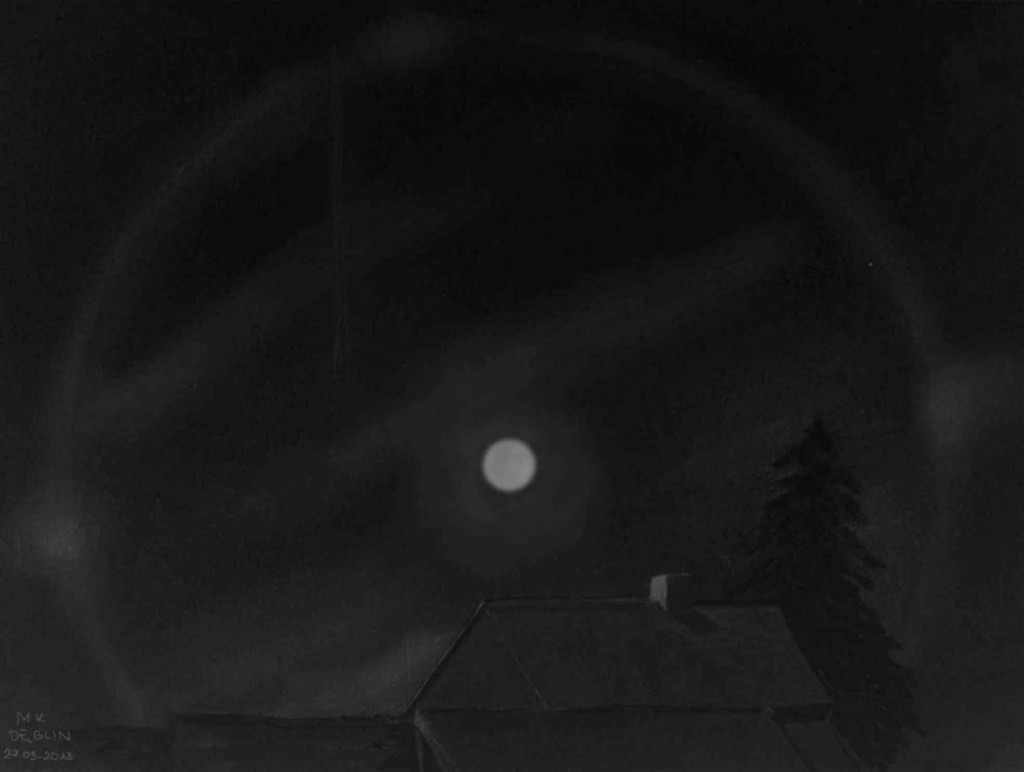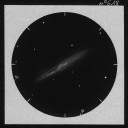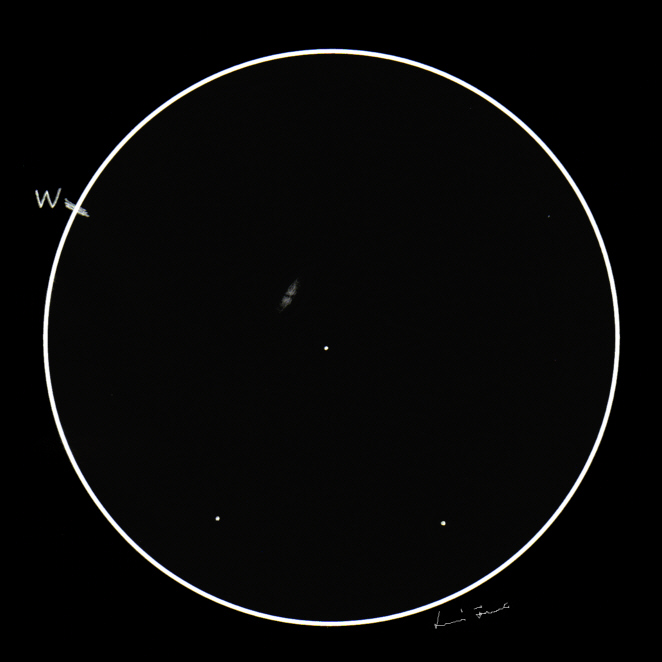
Object name: Frosty Leo (IRAS 09371+1212)
Object type: protoplanetary nebula
Location: Nádasdladány, Hungary
Date: 2013.03.07 21:15 UT
Media: B + 5B pencils on white paper, inverted digitally
Telescope: 12″ f/5 Newtonian on Dobsonian mount
Magnification: 469x
Seeing, transparency, SQM: 5/1, 3/5, 21.16 MPSAS
Temperature: 280 K
Description:
A rarely observed protoplanetary nebula I’ve first read about in Cloudy Night’s Sketching forum. It’s as small as expected, but much fainter. Elongated to the N-S, with a clearly visible dark band divinding the nebula to to halves, when the seeing gets better for a few moments. Reminds me of a faint little nearly edge-on galaxy. I haven’t checked photos of this object before my observation, so I’m quite surprised now that I’ve seen the dark band, because even on a sketch made with 600mm scope it does not show up. But I know that my eye did not lie. A highly recommended gem.
Cheerio, Ferenc
